Highlights From Docent Training
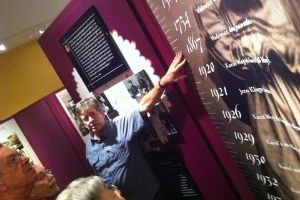
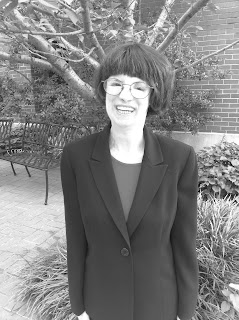
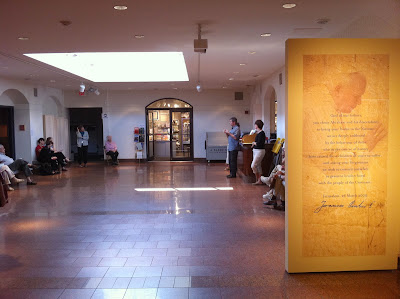
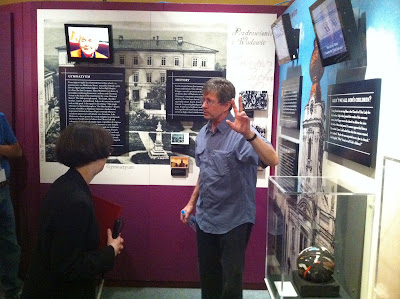
Upon entering the exhibition gallery, I felt as though I had been instantaneously transported back in time to 1920’s Wadowice. I saw vivid large photos of the buildings in Wadowice that played a central role in the Pope’s youth. These buildings included: the Pope’s boyhood Catholic church, his close childhood Jewish friend Jerzy Kluger’s synagogue, the schools that they attended together, both their junior high school and their gymnazyum (high school). As I stood in the center of this welcoming re-creation of this community, I became transfixed by the sounds of chiming church bells and the happy, bright sounds of popular Polish music from the 1920’s in the background, as I listened intently to the exhibition co-curator Dr. James Buchanan retell us stories of some of the interactions between the Pope and his Jewish childhood friends. I could easily imagine myself sitting in the Pope’s Catholic church where Dr. Buchanan told us that after Jerzy had learned that he had passed his entrance exam for admission into gymnazyum, he went into Karol’s church where Karol was attending mass, in order to tell him about his great news. While Jerzy was sitting in the church waiting for Karol, a woman told him that he did not belong there.
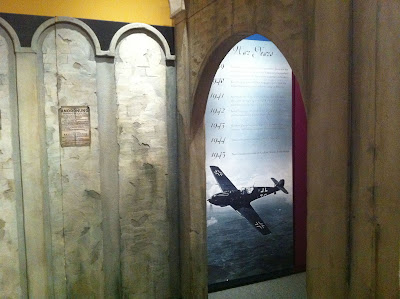
As we walked further through the exhibition, I saw a replica of a 1920’s soccer ball that Karol used when he chose to be the goalie for the community’s Jewish soccer team. This was an interesting decision as there was also a Catholic soccer team, but Dr. Buchanan explained that the Jewish one was the one that needed a goalie. As we began walking through time, Dr. Buchanan drew our attention to a picture of a by all accounts very attractive Jewish young woman who scholars believe Karol was in a relationship with while he was studying at Jagiellonian University in Krakow before he entered the priesthood. It was also during this time period, (the early 1940’s Nazi occupied Poland era) that Karol while he was still living in Krakow joined the Nazi resistance movement. It was in this part of the exhibition that we viewed artifacts from the death camps both film footage and objects such as a canister which had contained the deadly poison Zyklon B which was utilized to exterminate many of the inmates in those camps.
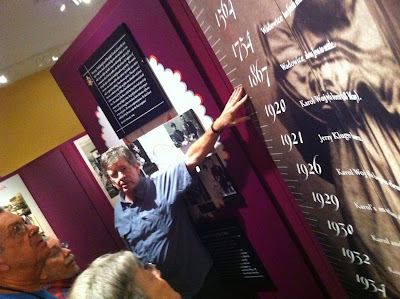
This exhibition has deepened my understanding of the formative events that occurred in the Pope’s life which would, according to Dr. Buchanan, inspire the Pope to become an activist for dialogue and understanding between the Catholic community and the Jewish community. Several examples of this dialogue according to Dr. Buchanan include: the Pope’s formal written proclamation which stated that Catholics and Jews shall be a blessing to one another, Pope John Paul II was the first Pope in history to make a formal visit to the State of Israel and he established formal relations between the Vatican and the State of Israel. The exhibition also highlights a uniquely diverse City, Wadowice, which to a great extent according to Dr. Buchanan’s research accepted Jews in a region where and in a time when Jews faced tremendous anti-Semitism.
